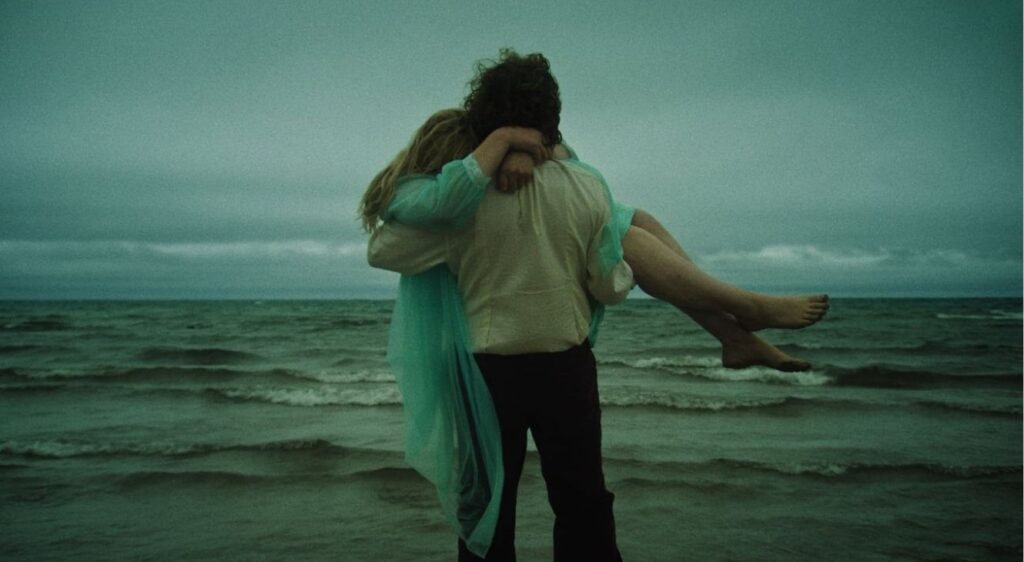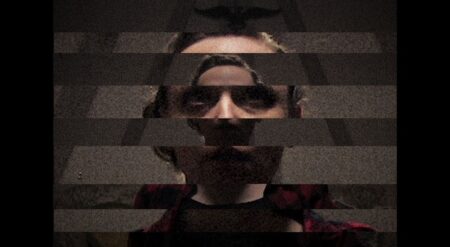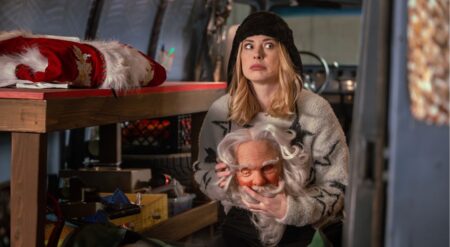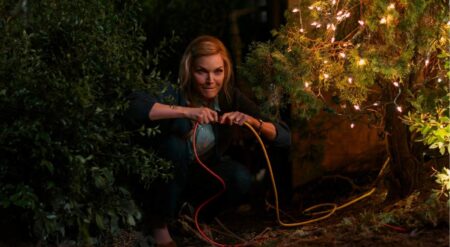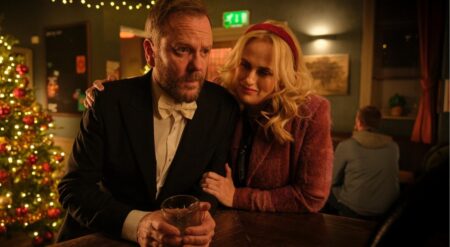After their highly successful feature debut, Violation, made waves, expectations were high for Honey Bunch, the sophomore follow-up for the filmmaking duo of Madeleine Sims-Fewer and Dusty Mancinelli. Initially evoking a gothic psychological sensibility, this film is a slow-burning ride toward an inevitable reckoning. Once a major, ambitious reveal is unearthed, however, Honey Bunch loses its sweet touch, turning its strongest plot elements into little more than a farce.
Honey Bunch opens with a haunting, foreboding scene at the beach. An ill woman and a sorrowful-looking man look out at the waters, before the man picks her up and walks into the sea. This sets an eerie, spine-tingling tone that becomes lost as the story unfolds. From this chilling opening, we pivot to the same couple in the car, but the woman is now healthy. Or at least, that’s what it seems at first glance.
The reality is that the woman, Diana (Grace Glowicki), is still recovering from brain trauma after a serious accident, having lost the bulk of her memories prior to the accident. Her husband, Homer (Ben Petrie), is dedicated to finding her the best treatment, which prompts him to relocate the couple to a remote manor for experimental therapies conducted by the head of staff, Farah (Kate Dickie).
Honey Bunch builds up faith in its initial slowburn gothic embrace (until its dramatic pivot).
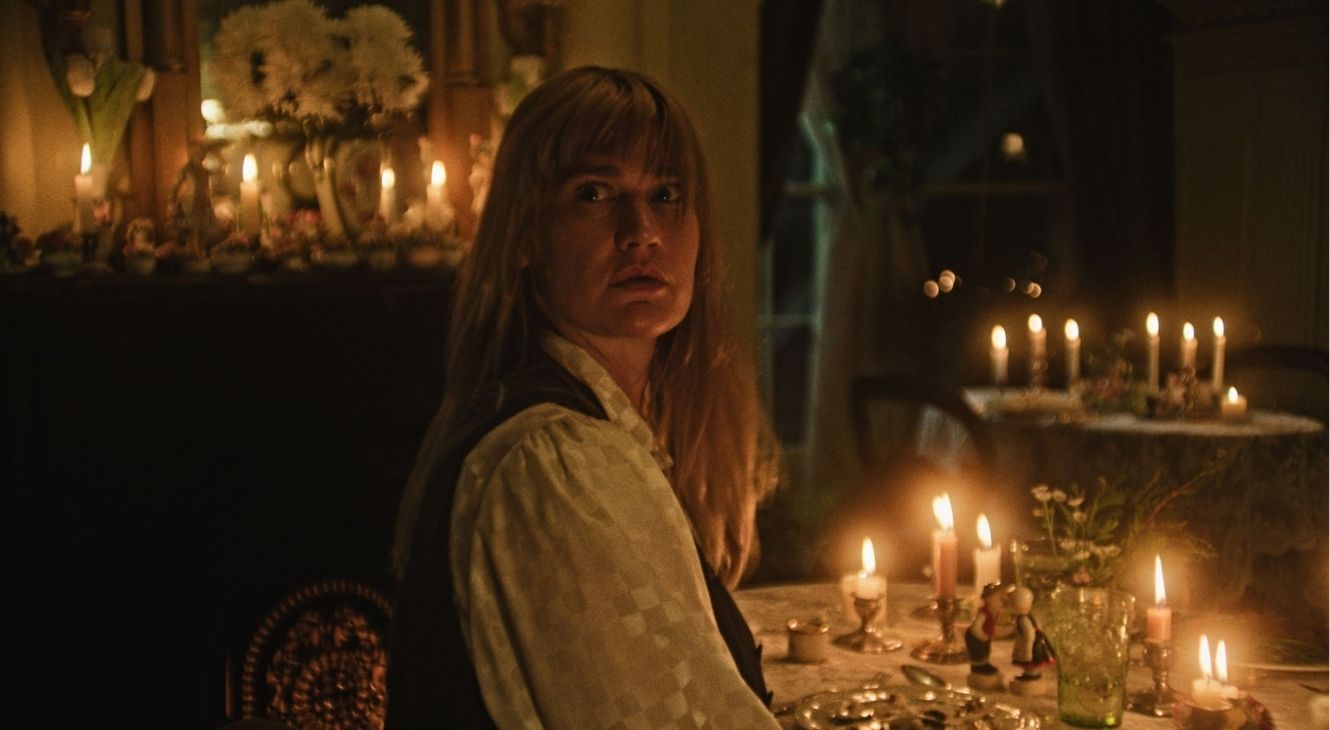
These therapies are somewhat unusual but make sense from a neurological perspective (particularly the EEG featured earlier in the introduction to these treatments, which carries a major strobe warning for those who are sensitive to it). However, upon arrival, Diana starts to feel off. Hallucinations arise, and the lore behind the manor starts infiltrating its way into her thoughts. Not helping matters is the air of secrecy, particularly between Homer and Farah. It is no wonder then that suspicion starts to grow.
The first half of Honey Bunch excels at slowly building the suspicion and tension surrounding the events at the treatment facility. The chemistry between real-life couple Grace Glowicki and Ben Petrie sells the connection between their characters, Diana and Homer. From their flippant, yet playful exchanges to the hidden sadness behind Homer’s eyes, you want things to go well between the two. And, when the secrets begin to pile on, Homer’s lack of communication proves easily frustrating (in a good way).
The introduction, later on, of a new patient, Josephina (India Brown), accompanied by her overtly positive father, Joseph (Jason Isaacs), muddies the waters. Joseph provides a stark contrast to Homer’s growing cynicism and secrecy. Where Homer is elusive with Diana, Joseph is open with Josephina. Yet, as the two pairs take diverging paths, this once-welcome introduction proves to add too much to an increasingly vexing storyline, and not even Isaacs’s inspired performance can keep things afloat.
Jason Isaacs gives an inspired performance that ultimately can’t elevate the film’s latter half.
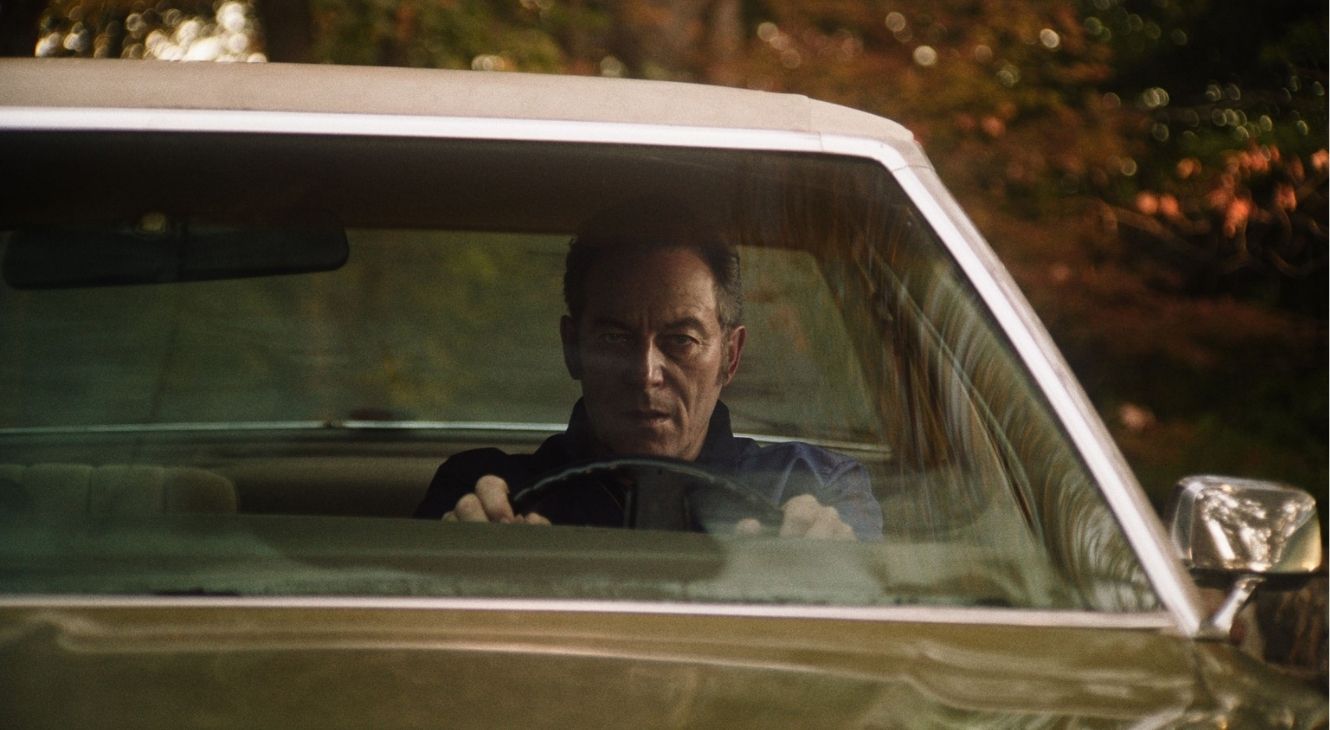
Sims-Fewer, Mancinelli, and cinematographer Adam Crosby infuse Honey Bunch with an influential ’70s aesthetic, featuring dramatic punch zooms that focus on Diana’s face or sweeping shots that tickle the senses, making the viewer question with Diana what it is that they’re seeing. The lived-in quality of the treatment facility grounds things in a reality that becomes desperately necessary (yet never quite regains its grip later on) as Grace’s mental state worsens.
Where Honey Bunch falls apart is in the execution of its twist. The twist itself harbors great potential that reminds, if not meets up to, the sensibilities of author Kazuo Ishiguro’s Never Let Me Go. Yet, the transition from the subliminal to the physical requires a suspension of disbelief that is never quite sold to the audience. Part of this is evident in the direction and performances conveyed from the halfway point onward, with acting delivery that borders on comical, however unintentional.
It’s a shame because, in its final act, Honey Bunch loses the natural tension and unease it has spent much of its time building, making poor use of its promise. In the film’s final moments, a callback to its opener, there is a glimpse of the sinister underbelly that the twist introduced, hinting at further calamities to come. Yet, the journey leading up to this point knocks the wind out of the sails of what could have been something truly spectacular.
Honey Bunch bets big, reveling in nostalgic ’70s gothic sensibilities before taking a giant leap of faith. Unfortunately, this leap sends the film plummeting downward, never quite recovering until the end. Despite the various love stories at its center, Honey Bunch wears out any love that is fostered.
Honey Bunch played as a part of the Toronto International Film Festival. The film will debut on Shudder in 2026.
Honey Bunch
-
Rating - 5/105/10
TL;DR
Honey Bunch bets big, reveling in nostalgic ’70s gothic sensibilities before taking a giant leap of faith. Unfortunately, this leap sends the film plummeting downward, never quite recovering until the end.

